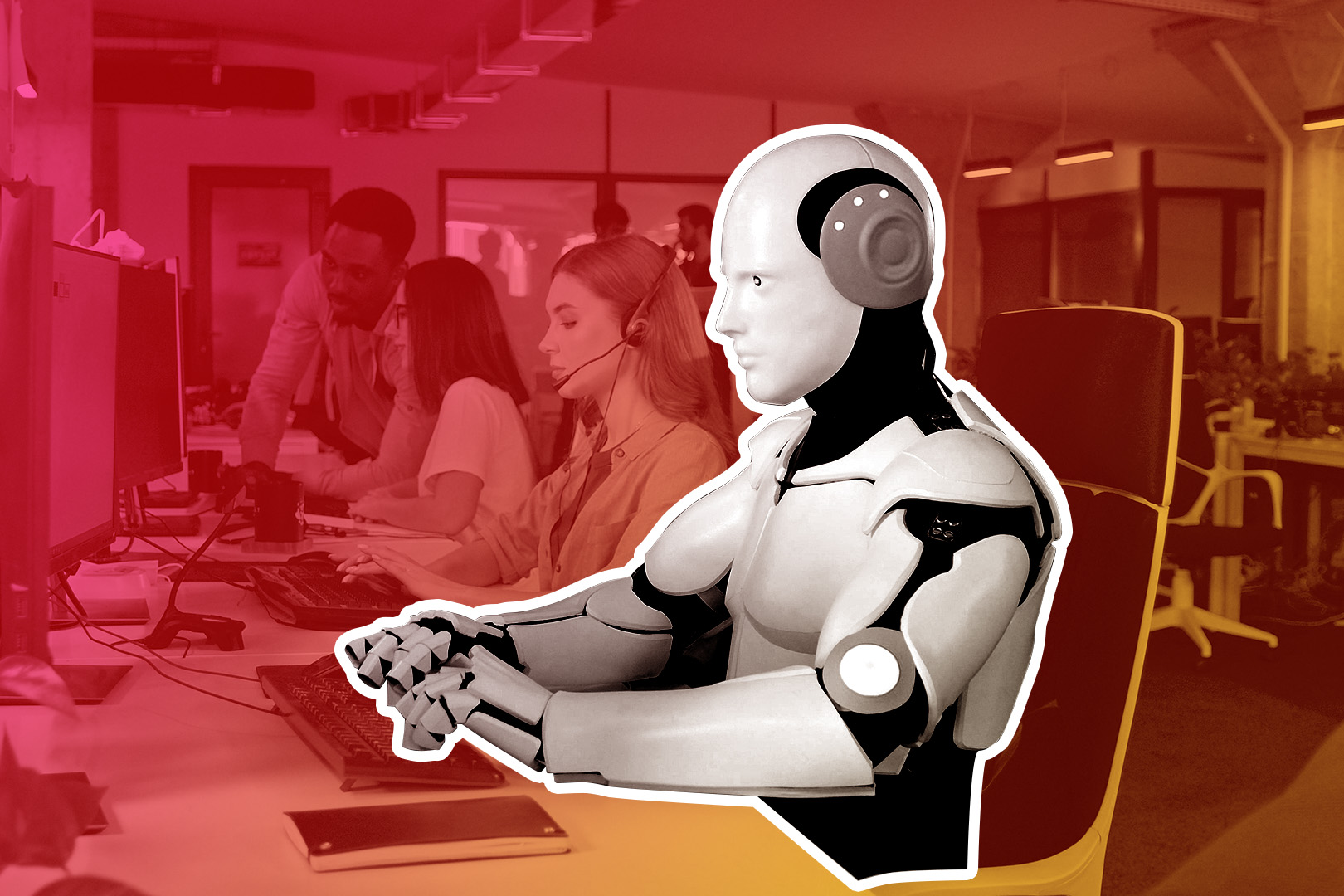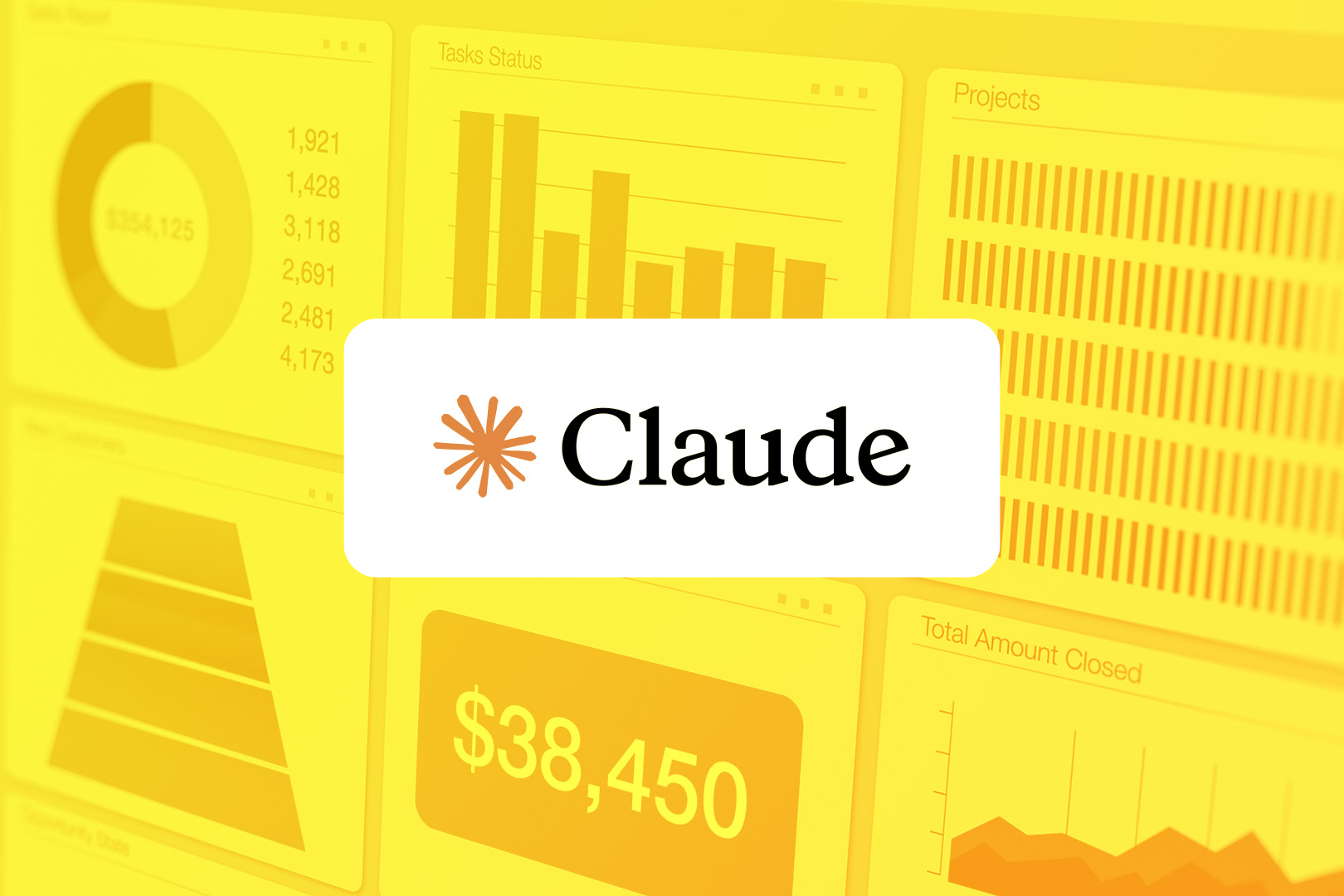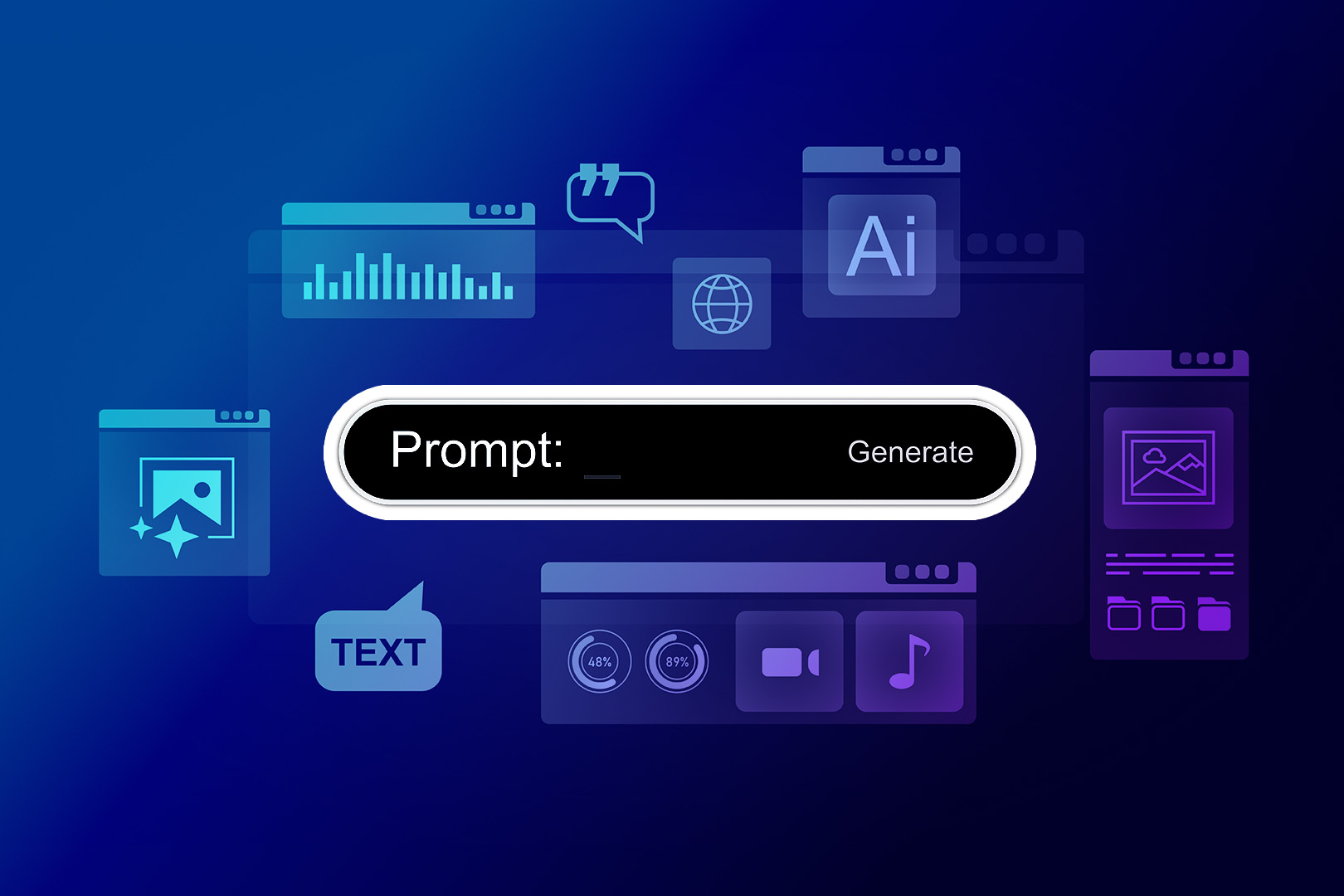Want to make a sale as easily as you flip a switch? Then an AI SDR (sales development representative) is…
…not your best bet. At least not without you.
Yes, an AI SDR can offer you pointed forms of support. They can scrape your information, draft a polite reach-out email, and maybe schedule follow-up times. They’re amazing at organization and analytical work.
But human SDRs have countless skills that AI can’t replace:
- AI can’t read or mirror a client’s body language to put them at ease
- AI can’t select the perfect, subtle wordplay for a humanized, quick email
- AI can’t show up ten minutes late for a call demo and somehow make it work and still win everyone over.
What they can do is make a salesperson better (and more efficient) at the less-human aspects of that job. But what does that look like in practice? Let’s explore.
What is an AI SDR?
AI SDRs are software powered by LLMs and automation to perform sales tasks, typically top-of-funnel: prospecting, outreach, meeting scheduling, and more.
SDRs function well on raw data and human language. What if there are tasks—such as scraping email threads for summaries or scheduling an ideal follow-up—that rely on vast tracts of language data?
Then SDRs make an effective “robo sales assistant,” so to speak.
Think of it this way: if AI SDRs can remove the repetitive work from your sales job, you’re free to focus on the human side of sales.
After all, both inbound and outbound sales strategies require a responsive, human touch. But anyone who’s done outbound strategy knows there are a lot of structured, painfully repetitive tasks, like:
- Researching contacts
- Conducting cold outreach via email and CRM
- Multi-channel sequencing to meet customers in various media
If you’re tired just reading those bullet points, you get the appeal of AI SDRs. These are the tasks you can easily automate.
As a result, AI SDRs are more common in outbound sales than inbound. With just one caveat: AI is rapidly evolving, so it might one day become sophisticated enough to handle more of the repetitive inbound tasks, too.
AI SDRs are Sales Teammates
A human sales development representative used to handle all of these tasks. That meant a lot of time and mental processing. Which leads were more likely to convert into customers? When is the right time to schedule a follow-up?
Those are the sorts of questions you can outsource to AI SDRs now. That enables these tools to…
- Target smarter leads
- Scale your lead generation
- Focus more on meaningful lead engagement
- Reduce the time to close the sale
AI can do this because they’re handling the nitty-gritty stuff: research, crunching numbers, scheduling, multi-channel communication, and fast follow-ups that would otherwise eat up hours of your week—and months out of your year.
How AI + human SDRs work together
The idea is a bit symphonic. AI and human SDRs can work on the same sale, but while the human is playing lead violin, AI can pound the timpani to keep the momentum going. (Nothing against timpanis).
Here are a few ways you can envision AI and human SDRs working together in your sales orchestra:
- AI SDRs are most useful when a human does the steering. Humans provide specific product expertise and strategic wisdom. They oversee the sale and know when something “feels” right. AI tools provide back-end implementation and enhance speed by processing data more quickly.
- AI SDRs should work on what they’re good at. And they’re good at a lot. They can identify/qualify leads—ideally based on your criteria. They can generate personalized first-touch emails—that you oversee. They can transcribe demo calls and give you a bird’s-eye view of overall customer sentiment.
- A human should still lead the way. Human SDRs still need to review and edit outbound communications to avoid embarrassing snafus. Humans still need to represent their service or product, building rapport with the prospect and responding to complex objections. And they may need to revise a sales strategy on the fly.
This isn’t to say AI SDRs are “backburner-only” tools. They are changing the competitive landscape. Just remember that it’s not salespeople versus. AI.
It’s salespeople who leverage AI versus everyone else.
When Does an AI SDR Do its Best Work?
Like that classic teacher-parent conference in which you learn your student has to apply themselves, AI SDRs do their best with a focused, precise application.
What applications work best? Typically, AI thrives on organizational, analytical, and editorial support. AI SDRs tend to excel in tasks that involve repetitive language and data processing.
Yes, these tasks are crucial! But be honest. They’re also labor-intensive, dull, and a bit of a drag.
Let’s get specific about what AI SDRs do best:
When Your Reps are Struggling to Keep Up with the Lead List
AI SDRs have built-in communication tools capable of streamlining outreach across multiple channels:
- One-click calling and predictive dialing
- Email automations/cadences
- SMS software
You can scale up any sales operations that rely on these tasks without requiring a bigger sales team.
When Your Amazing Sales Team isn’t Super Tech-Savvy
AI SDR tools are user-friendly. You can talk to them the way you’d talk to a person. Or, maybe more appropriately, an android like Data from “Star Trek.”
Sales teams can use these AI SDrs to transition to a sophisticated system quickly, meaning you can interface with the AI rather than endure horribly complicated onboarding processes.
When Your Tech Stack Has Grown Disjointed + Ungainly
No salesperson wants a job that feels like hacking through jungle vegetation. You want your AI SDR platform to centralize and unify your outreach, CRM, and task management in one seamless interface.
So that’s what it does. The entire sales team can use a shared interface for a single source of truth.
Simplicity is its own reward, but it also helps cut down on monthly maintenance bills.
When Leads are Slipping Through the Cracks
“Efficiency” is a bit of corporate technobabble if it’s not specific. But if inefficiency means you lost leads who were once potential customers, it gets real in a hurry.
AI tools can plug those gaps with smart lead distribution and automated follow-ups. Sales reps can review that data and prioritize these slipping leads to focus on the most promising option.
The result? Lower-priority lead engagement is still tracked, yes. But your sales reps don’t feel like they’re missing out on potential sales.
When Sales Managers are Looking for Better Visibility into Daily Activity
A manager doesn’t want to peer over anyone’s shoulder. Too invasive.
But they do want the information that comes from peering over shoulders.
AI SDRs offer a happy medium: call recording, live coaching support, and overall analysis on customer sentiment can let managers effectively guide their reps at scale.
When Sales + Marketing Feel Out of Sync
AI SDRs provide pipeline visibility across your entire process—and the entire brand team can access that visibility whenever needed.
Need a department to track their obligations and KPIs more effectively? It can do that. As a result, the experience is more seamless, no matter who’s using the tool.
The Key is to Work Within AI’s Limitations
The benefits of AI SDRs should be clear at this point.
They can free you up to be a more effective salesperson. They can remove hours of drudgery from your work life while giving you all the practical benefits of a bona fide assistant.
But there are still limitations. So let’s also be clear about what AI SDRs won’t do for your sales team.
AI SDRs Can’t Entirely Nurture Your Leads…
…but they can highlight the most promising leads at any given moment.
Data enrichment tools can qualify leads in real-time based on criteria you set. AI SDRs can automatically update profile information and engagement history when potential customers reach out.
But the human SDR should choose who to reach out to. AI SDRs will just keep you strategic and informed, cutting out B.S. along the way.
AI SDRs Won’t Perfect Your Sales Pitch…
…but they can help you adapt for outreach.
Our recommendation? Let AI SDRs craft the emails, SMS messages, etc., as the first steps that help speed up the process, but a human should review, edit, and hit send every time.
They Won’t Keep Every Engagement Warm…
…but they can make sure that stay on people’s radar.
While an AI SDR is not a toaster oven with a “warm” setting for customers, they can help you stay hot on a lead’s tail, scheduling and automating follow-up flows.
They can also personalize these touchpoints, letting you scale your operation more effectively.
How to Make AI SDRs Work for You
It’s as simple as matching the tool to the task. Hammer, meet nail.
AI SDRs are a tool. But AI is a new category of tool, and it takes some time getting to know what it needs:
- Set objectives for your AI program. AI SDRs need clear goals and strategies if they’re going to be effective. Plan these out before you start automating to prevent disappointment.
- Implement workflows progressively. Don’t expect to flip a switch and have AI SDRs do everything perfectly for you overnight. Train that muscle, and keep adding a little more weight each time.
- Position AI as an assistant, not a replacement. Reassure your real SDRs that they’re still the most valuable part of your sales team. Because they still are.
- Stay vigilant with your quality assurance. This is especially important in the early stages. Human SDRs should stay on top of AI, reviewing every piece of communication AI is composing.
- Continuously refine your workflows. AI functions can work great out of the box. But they really shine when you tailor them to your specific needs and company quirks.
- Set guardrails. AI needs your guidance on referencing real, relevant product details. If you don’t give it proper data to pull from (prospects’ job titles, industries, etc.), it will generate fluff before it tells you it doesn’t have an answer.
- Celebrate your wins. Once you’ve got a system in place, celebrate your growth and new efficiency. With AI in its proper context, you won’t get frustrated when it doesn’t fix everything you’ve ever done, like some magic wand.
Sales for Humans. AI for Everything Else.
Back to the question at hand. Do AI SDRs actually work?
The answer: definitely.
With the proper guidance and human involvement. The most successful use of AI SDRs strikes a balance between human SDR artistry and AI support.
Close’s AI-powered sales tools are designed with this precise dynamic in mind:
- Integrating with your existing systems
- Avoiding AI hallucinations
- Customizing to each sales rep’s preference
So how can AI streamline your sales outreach?
Further reading:
- 5 Tips for Using AI Enrich to Make the Most of Your CRM
- Introducing AI Enrich: The End of Tedious CRM Data Entry
- We Tested 13 AI Sales Tools: Here’s What You Need to Know About Them
FAQs about AI SDRs
What is an AI SDR?
An AI SDR is a software platform that automates parts of the sales development process. Prospecting, lead qualification, email, scheduling, meeting notes… These can all be reliably assigned to AI tools in an SDR platform. These tools act as virtual assistants that handle the heavy lifting of sales operations.
Can AI SDRs replace human sales reps?
No. AI SDRs support—but don’t replace—salespeople, since humans are still essential for relationship building, objection handling, strategy shifts, and running demos. The real advantage comes from combining human skills with AI-powered efficiency.
AI SDRs excel at support tasks like prospect research, sequencing, and scheduling. When combined with human judgment, they significantly improve efficiency and sales team performance.
How do AI SDRs support human SDRs?
AI SDRs handle repetitive, time-consuming tasks so human SDRs can focus on higher-value activities like building rapport, handling objections, and closing deals. AI is incredibly useful when it comes to scale and speed, but it can’t really approximate the more subtle, emotional side of sales technique. Humans bring strategy and empathy. They design and manage the sales flows while AI handles the grunt work.
What tasks can AI SDRs automate?
AI SDRs can automate any task that involves templated data analysis, documentation, or simple writing tasks. They can qualify leads, draft personalized emails, build follow-up sequences, transcribe calls, create post-call tasks, and schedule demos when interest is shown. By offloading these tasks, sales teams free up hours each week to focus on conversations that actually drive revenue.
When should I use an AI SDR?
AI SDRs work best when you have a heap of admin and data-oriented tasks that you’re trying to scale or streamline. If your tech stack is fragmented, your lead volume is overwhelming, and your managers need better visibility into rep activity, then AI SDRs can provide some very pointed relief.. In these scenarios, AI helps prevent missed opportunities and accelerates sales outcomes. User-friendly, out-of-the-box AI SDR software can be extra helpful when your team is small and you don’t have a lot of AI infrastructure.
What are AI SDRs bad at?
Success in sales depends on the ability to read people and build relationships. AI can’t really do either of those things very well. AI SDRs don’t have the subtlety or emotional intelligence that real, human salespeople do. They also don’t have the product expertise or professional experience. That’s why they work best as assistants, not replacements.
What benefits do AI SDRs provide to sales managers?
AI SDRs give managers better visibility into rep activity through call recordings, live coaching support, and performance tracking—making it easier to guide reps at scale. With better data and monitoring, managers can coach smarter and allocate resources more effectively.












